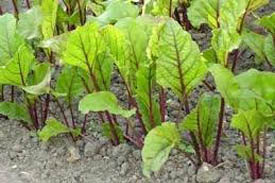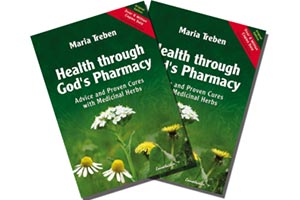Gardening 2015
 Following the warm spell many good souls were planting their tomatoes and peppers and awoke this morning at 20F witnessing shriveled up dead plants. I suspect that the first rule in Spring gardening is understanding the weather and plant when it is going to stay warm. I do not plant outside the greenhouse before 15 May, at an elevation of 2500 feet; Christiansburg/Blacksburg is 500 feet lower and a tiny bit warmer. Colorado people at 10,000 feet really have problems with the cold.
Following the warm spell many good souls were planting their tomatoes and peppers and awoke this morning at 20F witnessing shriveled up dead plants. I suspect that the first rule in Spring gardening is understanding the weather and plant when it is going to stay warm. I do not plant outside the greenhouse before 15 May, at an elevation of 2500 feet; Christiansburg/Blacksburg is 500 feet lower and a tiny bit warmer. Colorado people at 10,000 feet really have problems with the cold.
A soil thermometer is also a big help since it takes a few days for the soil to remain constantly warm, say 55F. Tomatoes will not grow below 55F, and barely grow at that temperature. A cold ground to plant corn will give you rotted seeds. If you have very short growing seasons you can try with row covers of clear plastic for your lettuce and such. Cabbage, collards, broccoli sets tolerate cold weather but not freezing. There are surprise cold snaps even into July. I prefer to take PVC ½ in pipe, bend to a hoop over the row beds, say a foot high covered in greenhouse plastic clear view. Cheap painters plastic will not tolerate sun and start to degrade quickly when you touch it. With broiling sun/heat you can gently roll up the side and snap close with a clothespin; close the covers for night chill.
After determining what you are going to do with the cold you can, in advance, till your garden plot, fork it and rake, or even plow and harrow. The important thing to remember is plants grow best when they have the right pH. This potential hydrogen factor allows the specific nutrients to be made available to the plants’ roots, and subsequently up into the plant you are growing. Generally most garden plants want a pH of about 6.8 on a meter scale. These meters are inexpensive and found in garden stores and on Amazon.com. You will note that the scale on the easy to read meter goes from zero to 14; 7 being neutral. Each subdivision of the meter is exponentially effecting your fertilizer intake-so with the growing recommended indexes provided by the manufacturer you can be very specific.
Let us assume your pH reading, taken at several parts in the garden plot reads 6. pH. This is unsatisfactory so you must raise the pH up to 6.8 pH. That .8 negative is exponentially making miniature plants. Yes there will be growth, but no energy is getting to the plant no matter how much fertilizer you pour on.
To raise the pH is a slow process and better started in the fall. However the beginning gardener is anxious to get started. I suggest that you use 1 pound of powdered Dolomite Limestone for each complete index on the pH. Meter, per 100 square feet. In this case I would start to raise the pH from 6 to 6.8 by broadcasting the powder by hand, or fertilizer duster, at about 1/3 pound, tilling it back into the soil, preferably with a roto-tiller such as a Troy Build Tiller. Wait two weeks and retest. If low, add some more. Then re-till and wait and retest. Now you see why it is best to do this in the fall time.
Let us assume you reading a pH of 7.5. This is where you dust with GARDEN SULFER DUST sold in garden centers in 1 or 2 pound bags. I suggest making a duster by using an old milk jug, punching some small holes in it, add the sulfur and gently MIST the dust over the garden plot. This is a very light dusting and the acidity rises very quickly; after tilling you can retest. That quick! You are advised because of the acid nature of garden sulfur to wear gloves, eye protection, and old clothes you can quickly wash. I always take a shower after dusting. Keep small children out of the dusting otherwise their eyes will water and be uncomfortable.
I hope to make another video for you about setting plants; probably in May. I have 3 videos so far.
Now after the proper pH is set in the soil you can think about commercial fertilizer. I might add that if you are organic purist using animal manures and composts this application is best in the fall time to rot in the soil. Avoid Horse Manures, as they are full of weed seed and generally too hot in nitrogen, however Horse manures can be used with deep underlying soil levels, such as planting holes for fruit trees IF YOU DIG THE HOLES in the fall time and add Horse manures to rot-rot-rot. Horse manures are also loaded with chemicals for the horse-not you. I might add their stalls are usually filled with ground up wood chips of some sort and this will kill your nitrogen needs. If you work around horses, or have horse manure projects GET a TETNUS vaccination, before you get punctures or cuts. A nail puncture, as an example can cause gangrene and amputation; that is if it does not get to your heart.
Chicken manures are best and they are hot. Pig, cow and goats are excellent, but all need be tilled in at fall time. Wear a dust 97 mask. Human manures are NOT recommended; even China has gone to commercial fertilizers. Human manures, no matter what the Hippies and New Age people subscribe to, carries disease. Think Cholera, Typhoid, Impetigo, as well as other miseries. Saving human urine is regrettable: it stinks, dissipates nitrogen quickly and the garden trolls advocate it in your household plants and greenhouse. BEWARE of Trolls’ advice.
Different plants require different levels of Nitrogen, Phosphates, Potash, and with cabbage-Boron. Most commercial farmers spread their fields with 20-20-20 and we usually use 10-10-10 or 8-8-8 fertilizers in the bag. These bags contain, basically salt soaked in the fertilizer compounds
Hence the Environmental drum beat of fertilizer run off into the streams and killing fish etc. The first attempt by the Environmentalist is an attack on phosphates importation. You will note new bags of fertilizer being sold as 20-20, or 10-10 or 8-8. Phosphates are missing. Assuming we all will be doomed by regulation of phosphates and rising prices, you can, in a survivalist mode grow Buckwheat several times in the plot so designated and boost phosphates. Buckwheat as an early cover crop is wonderful. Just broadcast the seed and lightly till in, beating the birds swooping down. Buckwheat was a mainstay in Europe and the USA in the old days. You have not lived until you have had real buckwheat-non sour- pancakes. Strengthens the body and soul.
You can also purchase an inexpensive chemical test kit for about $30.00 to ascertain fertilizer levels and these kits contain what are the recommended levels for optimum growth of the plant. Therefore instead of broadcasting the general fertilizer you can SIDE DRESS your specific plants what is recommended in the test kits. I have no experience with the meter fertilizer test instruments sold.
Having enough water is important-you cannot wait for rain. Read my articles on collecting and storing water. In the mean time when digging holes to set fruit trees you fertilize mostly with composts and rich soil. You can place at the bottom of the fruit tree root ball 2 or 3 “Pep” pills sold through most of the garden catalogs. Then, which is most important is watering the root ball. Rain showers and a garden hose sprinkling are unreliable. I recommend a 1” PVC pipe inserted down into the root ball at planting so as not to jam up the pipe. Fill in the hole with the pipe standing a few inches above the soil level. Use this watering pipe every week, maybe every 3 days when it is very dry to keep that tree alive. Use stored, or garden hose water. I prefer stored water as opposed to running my well dry.
Re-read similar garden articles I have written in this series. Enjoy, as I will not be writing much longer. I am retiring at 80 with over 30 years writing for this area.
God Bless America. Live long and prosper.
Old Timer
COPYRIGHT: 2015, Back2theLand.com. All rights reserved.



